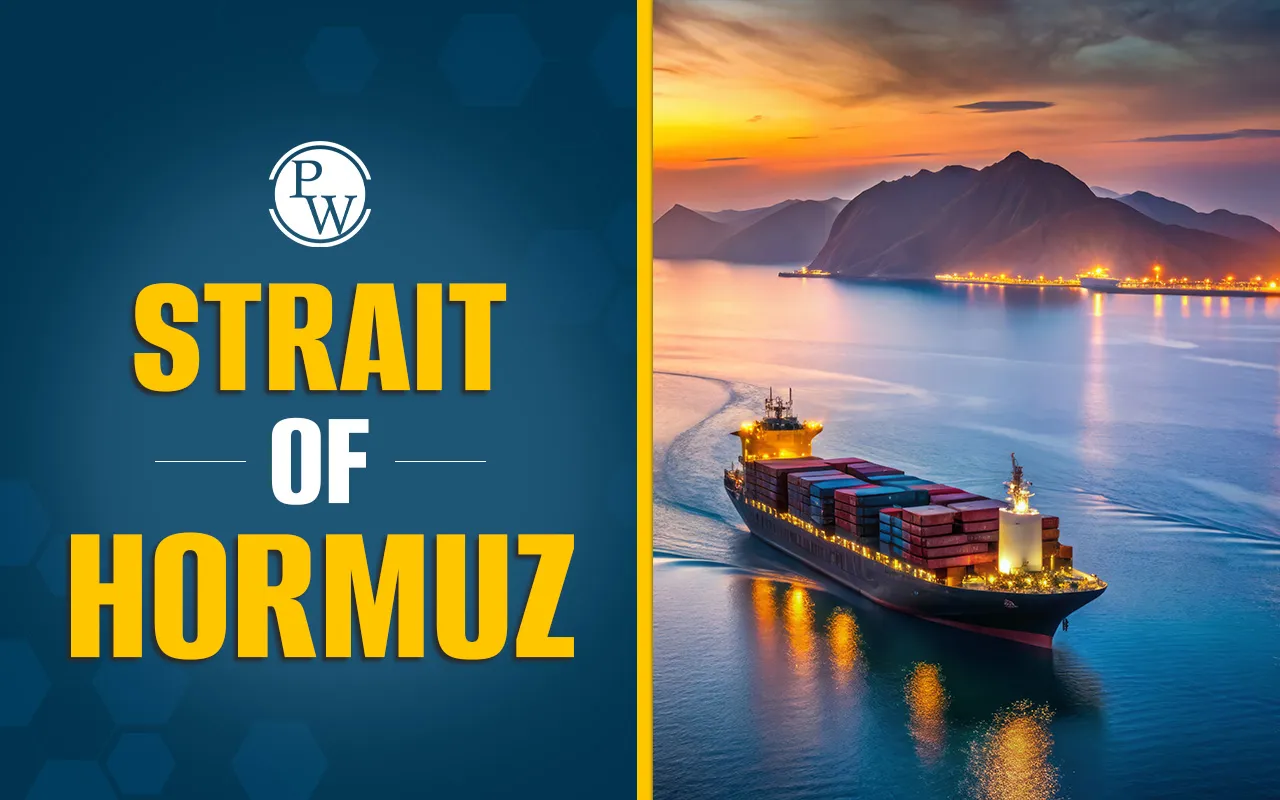

Strait of Hormuz, also known as the Strait of Ormuz, could be closed by Iran. This narrow waterway connects the Persian Gulf to the Arabian Sea and serves as a critical passage for a significant portion of the world’s oil and liquefied natural gas shipments. Recently, it has drawn international attention after Iran’s parliament approved a measure that could lead to its closure. Read on to learn more about the importance of the Strait of Hormuz!
Strait of Hormuz News
The parliament of Iran has approved the closure of the Strait of Hormuz in response to recent U.S. airstrikes on Iranian nuclear facilities. However, the final decision lies with the Supreme National Security Council. This move has heightened global concerns, as approximately 20% of the world’s oil passes through the Strait of Hormuz along with other commercial goods.
About Strait of Hormuz
The Strait of Hormuz is one of the world’s most critical maritime chokepoints that connects two significant water bodies, the Persian Gulf and the Gulf of Oman. It lies between Iran to the north and the Musandam Peninsula (part of Oman and the United Arab Emirates) to the south. This strait serves as the only sea passage from the oil-rich Persian Gulf to the open ocean.
Over the years, the Strait of Hormuz has long been a focal point for commerce, politics, and military activity. Commercial traffic in the strait generally follows the designated Traffic Separation Scheme (TSS) located north of the Musandam Peninsula. Any disruption to shipping in the Strait of Hormuz immediately spikes global oil prices, raises shipping costs, and threatens energy security.
Strait of Hormuz on World Map
The Strait of Hormuz is bordered by Iran, the United Arab Emirates, and Oman. It is approximately 167 kilometers long and varies in width from about 97 kilometers to just 33–39 kilometers at its narrowest point, with the main shipping lane being only about 3 kilometers wide in each direction.
Strait of Hormuz map credit: Wikipedia
Importance of Strait of Hormuz
The Strait of Hormuz is one of the world’s most strategically important waterways. Here are some key reasons for its importance:
-
Global Oil Transit Hub: About 20 million barrels of oil (20% of daily global consumption) pass through the Strait each day, making it the world’s most important oil chokepoint.
-
Crucial for LNG: Last year, around 83% of the liquefied natural gas exports, mainly from Qatar and the UAE, moved through the Strait to Asian markets
-
Limited Alternatives: Some pipelines bypass the Strait, but their capacity is small compared to the huge volume of oil and gas flowing through Hormuz.
-
Economic Impact: Any disruption can cause oil prices to spike, increase shipping costs, and drive global inflation, hitting Asian economies hardest since they rely heavily on these supplies.
-
Narrow and Vulnerable: The shipping lanes for large tankers are only about two miles wide each way, making the Strait susceptible to blockades or military conflicts.
What Happens if Strait of Hormuz is Closed?
The Strait of Hormuz is one of the most strategically important maritime chokepoints in the world. If Iran decides to block this route amid escalating tensions with Israel and indirect involvement from the U.S., the consequences could impact world trade:
-
Global Oil Supply Disruption: Over 20% of the world’s oil passes through the Strait. A blockade would create immediate shortages and drive crude oil prices sharply upward.
-
Disruption of Global Trade Routes: Alongside oil, LNG (liquefied natural gas) and other goods also pass through the Strait. A blockade could disrupt supply chains, particularly for Europe and Asia, which rely on these routes.
-
Insurance & Shipping Costs Surge: Commercial ships may face higher insurance premiums. Freight rates will increase, raising the cost of international goods.
-
Increased Military Tensions: The U.S., with military bases around the Persian Gulf, may intervene to protect its interests and ensure freedom of navigation, risking direct conflict with Iran.
-
Impact on India: India, heavily dependent on oil from the Gulf, would face major energy security concerns, potential economic slowdown, and rising import costs.
-
Strain on Global Diplomacy: Global powers would be pressured to respond diplomatically or militarily, potentially polarizing international relations further.
In conclusion, the strategic location of Strait of Hormuz makes it vulnerable to geopolitical tensions. Therefore, countries must prioritize diplomatic efforts, strengthen regional security cooperation, and develop alternative energy routes to ensure the stability of global energy supplies.
Want to stay updated on international issues? Explore UPSC courses for in-depth insights!
Strait of Hormuz FAQs
Where is the Strait of Hormuz located?
Which country controls the Strait of Hormuz?
Why is the Strait of Hormuz important?
What happens if Iran blocks the Strait of Hormuz?
Which countries rely most on oil passing through the Strait of Hormuz?

UPSC Coaching












